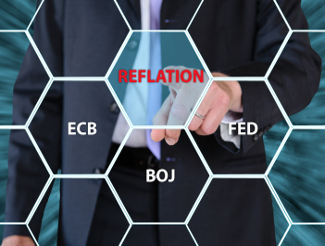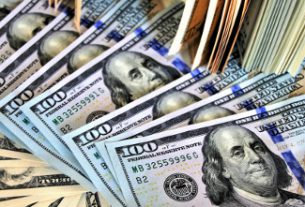To anyone taking a look at the US economy, the fact that the Federal Reserve is contemplating a rate cut, and the fact that markets are expecting a 50 basis point rate cut, is absolutely mind-boggling. Here we are with an economy that is supposedly booming, with employers struggling to find workers, with stock markets at all-time highs, and yet the Fed might cut rates, something that it normally does to heat up a slowing economy. What’s going on?
For one thing, the economy really isn’t doing so hot. The only reason it’s still sputtering along is because of the trillions of dollars of easy money the Fed pushed into the financial system over the past decade. Those dollars have finally wound their way through the system and are now pushing stocks to all-time highs.
The reason for that, however, is stock buybacks from large corporations, which continue to take place at a near-record pace. But those corporations are issuing debt in order to make those buybacks, and with debt exhaustion sure to set in, the buybacks will come to an end and stock markets will plummet. There’s only so much debt that can be issued, as it has to find willing buyers. And with investors increasingly shying away from corporate debt that continues to offer low interest rates even at low investment grades and even junk grades, the appetite for new debt is swiftly coming to a close.
The other reason the Fed is cutting interest rates is to keep from decoupling from other major foreign central banks. Abenomics in Japan has been a complete failure, and Mario Draghi’s dovish policies have done nothing to stop Germany, France, and Italy from seeing their growth slowing or declining. Now that Christine Lagarde seems set to take the top job in Europe, those dovish policies will continue. And Japan will continue the same path it has taken for nearly 30 years, purchasing as much debt as it can and even jumping into equity markets and US corporate debt markets.
The Fed’s rate hikes of the past few years risked putting it at odds with its major international counterparts, so cutting rates will align US monetary policy closer to that of Europe and Japan. That ensures that the dollar won’t strengthen too much against the euro and yen, risking a potential rise in prices for US exports. To the Fed’s way of thinking, rate cuts are beneficial since it will put all the major players on the same page. But with every country devaluing its currency in unison, investors and savers are going to be made worse off.
One of the reasons for gold’s great performance so far this year is the prospect of Fed easing. Since that would be seen as tantamout to the Fed admitting that the economy is not doing well, investors are trying to position themselves well for when the bubble finally bursts by buying gold to strengthen their portfolios. Gold’s gains so far will be eclipsed by leaps and bounds once the Fed actually cuts rates, so investors who get in now will reap the benefits in the future. Don’t be left behind when gold takes off, make sure that your retirement savings are protected with gold before markets take their inevitable downturn.
This article was originally posted on Goldco.




